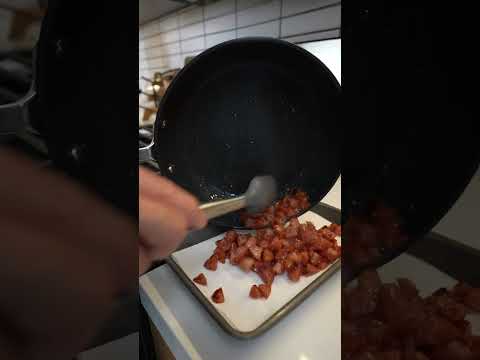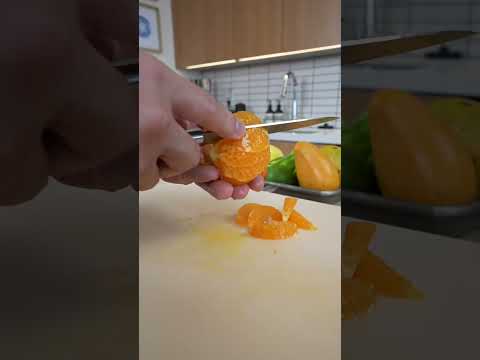
For the culinarian drawn to the intersection of science and art, the world of modernist cuisine offers a landscape of boundless possibility. It is a discipline that requires not just technical skill, but a deeper understanding of the why behind the how—the physics of heat transfer, the chemistry of hydrocolloids, the biology of taste. While its foundational texts are invaluable, the most dynamic and accessible classroom for this new frontier is YouTube. Here, a select group of creators has moved beyond simple recipe demonstrations to offer something more akin to a digital apprenticeship. This curated list focuses on the channels that provide the most insightful, rigorous, and inspiring instruction in the modernist culinary arts.
1. The Scientist: Chris Young
For those who believe that exceptional cooking begins with a fundamental understanding of first principles, Chris Young’s channel is the ultimate resource. As a co-author of the encyclopedic “Modernist Cuisine: The Art and Science of Cooking,” Young is one of the movement’s foundational figures, and his channel serves as a direct extension of that authoritative work.
- Philosophical Approach: Young treats cooking as a science. His pedagogical style is that of a calm, methodical professor, less concerned with fleeting trends and more focused on providing a comprehensive, evidence-based understanding of culinary processes. The channel eschews flashy editing and dramatic reveals in favor of clear, deliberate instruction.
- Content and Style: The cornerstone of the channel is its “Things Explained” series. In these videos, Young dissects complex topics with academic rigor. Viewers will not just learn the ideal temperature for sous-vide cooking; they will receive a detailed lesson on the thermodynamics of heat transfer and the precise cellular changes that occur within the protein. A tutorial on pizza becomes a masterclass in the material science of oven construction. The production is clean and professional, emphasizing the information being conveyed.
- Why It’s Essential: This channel is for the thinker, the tinkerer, the chef who is not satisfied with simply knowing that a technique works but needs to understand precisely why it works. It builds a foundation of knowledge that empowers the viewer to troubleshoot, innovate, and move beyond mimicry to genuine creation. It is the indispensable starting point for a serious study of modernist cuisine.
2. The Artist: Chef Studio
Where Chris Young provides the theoretical underpinning, Chef Studio provides the aesthetic masterclass. This channel is a visual feast, dedicated to the art of fine-dining presentation and the practical application of modernist techniques to create dishes of breathtaking beauty.
- Philosophical Approach: Chef Studio operates on the principle that aesthetics are not separate from flavor but are an integral part of the dining experience. The visual appeal of a dish is a prelude to its taste, signaling novel textures and a heightened culinary experience. The channel’s focus is on precision, artistry, and the meticulous craft of plating.
- Content and Style: The videos are hypnotic and dialogue-light, relying on high-fidelity macro shots and the quiet sounds of the kitchen to tell the story. The tutorials are detailed and visually-led, demonstrating the creation of ethereal foams, shimmering gels, impossibly thin tuiles, and perfectly quenelled sorbets. The channel excels at showing how to build a dish layer by layer, considering color, shape, and negative space with an architect’s eye.
- Why It’s Essential: For any chef who understands that we eat with our eyes first, Chef Studio is an invaluable resource. It is less about foundational science and more about the translation of modernist techniques into tangible, edible art. It is a digital sketchbook of ideas for composition, texture, and form that will elevate the presentation of any dish.
3. The Bridge: Jules Cooking
Modernist cuisine can feel intimidating, a world of unfamiliar ingredients and expensive machinery. Jules Cooking, helmed by a skilled Dutch chef, serves as the perfect conduit between the traditional fine-dining kitchen and the modernist laboratory.
- Philosophical Approach: Jules Cooking champions an integrative approach. Modernist techniques are not treated as a radical break from the past, but as an evolution—a set of powerful new tools to be added to the classical repertoire. The primary goal is always deliciousness, with modernism serving as a means to enhance flavor, texture, and creativity.
- Content and Style: With a warm and encouraging demeanor, Jules breaks down complex processes into clear, achievable steps. He might deconstruct a classic Caprese salad by turning mozzarella into a delicate foam and tomatoes into a clarified gel, all while explaining the process in a way that feels accessible to the home cook. The channel demonstrates the practical use of equipment like whipping siphons and sous-vide circulators within the context of complete, well-rounded dishes.
- Why It’s Essential: This channel demystifies modernism. It is the ideal starting point for a chef who wants to incorporate contemporary techniques without abandoning their classical foundation. Jules proves that a modernist pantry is not about gratuitous novelty, but about having a wider array of tools to achieve the most delicious result possible. It makes the avant-garde feel approachable and, most importantly, achievable.
4. The Specialists: Niche & Technique-Focused Channels
Beyond these broader channels, YouTube hosts a vibrant ecosystem of creators who focus on specific modernist sub-disciplines. For the chef looking to master a particular skill, these hyper-focused channels are indispensable.
- Spherification & Molecular Gastronomy: A search for “spherification” or “molecular gastronomy” reveals a community of passionate experimenters. Channels like Molecular Gastronomy and Modernist Pantry (the latter being a supplier with a vested interest in education) offer granular tutorials on creating perfect pearls, ravioli, and faux caviar. They provide invaluable troubleshooting tips for controlling pH levels, calcium concentrations, and other variables that can make or break the technique.
- Hydrocolloid Science: Understanding the gelling and thickening agents that are the backbone of modernist texture requires a deeper dive. While not as visually flashy, educational channels dedicated to food science often feature videos explaining the unique properties of agents like agar-agar, gellan gum, and xanthan gum. These resources provide the knowledge needed to create custom textures and invent new applications.
Together, these channels form a comprehensive, multi-faceted curriculum in modernist cuisine. They represent a democratization of culinary knowledge, moving the craft from the cloistered world of three-star kitchens to any digital device on the planet. From the foundational science of Chris Young to the accessible artistry of Jules Cooking, the resources are there for anyone willing to learn, experiment, and redefine what is possible on the plate.


